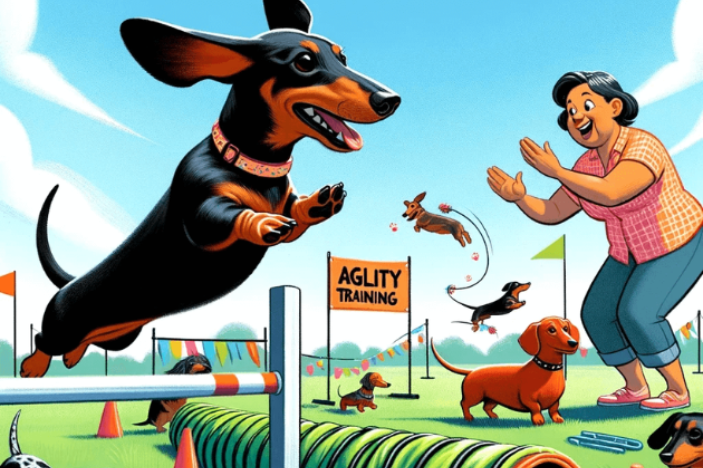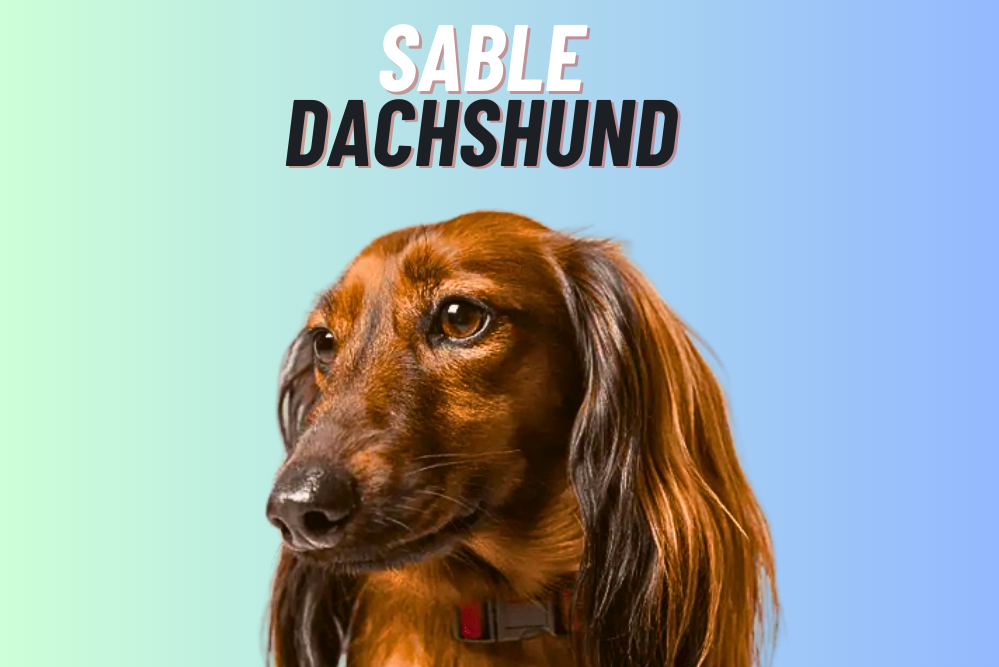The frequency of How Often Should You Bathe Your Dachshund will depend on a number of factors such as coat type, activity level, and how much time they spend outdoors. In general, dachshunds have short hair that is easy to maintain, so they do not need frequent bathing.
A good rule of thumb is to bathe your dachshund every three months or as needed, which may be more or less frequently depending on their individual needs. Overbathing can strip their skin and coat of natural oils, which can lead to dryness and irritation.
It’s important to keep your dachshund’s coat clean and well-groomed, so regular brushing and wiping with a damp cloth can help to remove dirt and debris.
If your dachshund gets particularly dirty or smelly, you can give them a bath using a mild dog shampoo that won’t irritate their skin. Be sure to rinse them thoroughly and dry them off completely to prevent any skin irritation or infections
What are the Benefits of Bath a Dachshund?
Bathing your Dachshund can have several benefits, including:
- Cleanliness: Bathing your Dachshund helps to remove dirt, debris, and bacteria that can accumulate on their skin and coat. This can help to prevent skin irritation, infections, and odors.
- Coat health: Regular bathing can help to promote a healthy coat by removing excess oils and debris that can cause matting and tangling. This can also help to reduce shedding and keep your Dachshund looking and feeling its best.
- Bonding: Bath time can be a great opportunity to bond with your Dachshund and strengthen your relationship. You can use this time to groom and massage your Dachshund, which can be a relaxing and enjoyable experience for both of you.
- Skin health: Bathing can help to soothe and moisturize your Dachshund’s skin, especially if they have dry or itchy skin. Using a gentle, moisturizing shampoo can help to keep their skin healthy and prevent irritation.
- Flea and tick prevention: Bathing your Dachshund regularly can help to prevent flea and tick infestations by removing any pests that may be present on their skin and coat.
Overall, bathing your Dachshund can help to keep them clean, healthy, and happy, and it can be a fun and rewarding experience for both of you
How to Bathe a Dachshund
Bathing a Dachshund is a relatively simple process, but it’s important to take some precautions to ensure that your dog stays safe and comfortable.
Here are some steps to follow when bathing your Dachshund:
- Choose the right location: Find a location to bathe your Dachshund that is warm, comfortable, and secure. A bathtub or sink with a non-slip surface can work well. Make sure the room is warm, and close any doors or gates to prevent your Dachshund from running away.
- Gather your supplies: Gather all the supplies you’ll need, including a mild dog shampoo, a cup or pitcher, towels, and a brush or comb. You may also want to use a rubber bath mat or a towel to prevent slipping.
- Brush your Dachshund: Brush your Dachshund’s coat before you begin bathing to remove any tangles or mats. This will also help to distribute natural oils throughout their coat.
- Wet your Dachshund: Use lukewarm water to wet your Dachshund’s coat, starting from the neck and working your way down to the tail. Avoid getting water in their ears, eyes, or nose.
- Apply shampoo: Apply a small amount of mild dog shampoo to your Dachshund’s coat, starting at the neck and working your way down. Be careful not to get shampoo in their eyes or ears.
- Rinse thoroughly: Use the cup or pitcher to rinse your Dachshund’s coat thoroughly, making sure to remove all the shampoo. Any leftover shampoo can cause skin irritation or dryness.
- Dry your Dachshund: Use a towel to dry your Dachshund’s coat thoroughly. You may also want to use a blow dryer on a low setting to dry their coat, but be careful not to use it too close to their skin or ears.
- Reward your Dachshund: After the bath, reward your Dachshund with treats and praise to help reinforce positive behavior.
Remember to always use a mild dog shampoo and avoid getting water in your Dachshund’s ears or eyes. With a little patience and care, you can bathe your Dachshund safely and effectively
Tips for bath a dachshund.
Bathing a Dachshund can be a bit tricky because of its long body and short legs, but with the following tips, the process can be smoother and more efficient:
- Use a non-slip surface: Dachshunds have short legs and may feel uneasy on a slippery surface, which can increase the risk of slipping and falling. Place a non-slip mat or a towel on the bottom of the bathtub or sink to help your Dachshund feel more secure.
- Use lukewarm water: Make sure the water temperature is lukewarm, not too hot or too cold. Dachshunds have sensitive skin that can be easily irritated by extreme temperatures.
- Protect your Dachshund’s ears: Use cotton balls or earplugs to prevent water from entering your Dachshund’s ears. Damp ears can lead to ear infections, which are common in Dachshunds.
- Use a gentle shampoo: Use a mild dog shampoo that is specifically formulated for sensitive skin to avoid skin irritation or dryness. Avoid using human shampoo or dish soap, which can be harsh and irritating to your Dachshund’s skin.
- Rinse thoroughly: Rinse your Dachshund coat thoroughly to remove all the shampoo. Leftover shampoo can cause skin irritation or dryness.
- Dry your Dachshund thoroughly: Use a towel to dry your Dachshund’s coat thoroughly. Dampness can cause skin irritation and may lead to skin infections.
- Reward your Dachshund: After the bath, reward your Dachshund with treats and praise to help reinforce positive behavior.
With these tips, bathing your Dachshund can be a comfortable and enjoyable experience for both you and your furry friend.
How can I keep my Dachshund’s coat shiny with a bath?
You can keep your Dachshund’s coat shiny and healthy with a bath by following these tips:
- Use a high-quality shampoo: Choose a shampoo that is specifically formulated for your Dachshund’s coat type and is designed to promote shine and health. Look for a product that contains natural ingredients such as aloe vera, oatmeal, or coconut oil, which can help to soothe and moisturize your dog’s skin and coat.
- Brush your Dachshund’s coat: Brush your Dachshund’s coat before and after the bath to remove any tangles or mats and distribute natural oils throughout the coat. This can help to prevent matting and tangling and keep the coat shiny.
- Rinse thoroughly: Make sure to rinse your Dachshund’s coat thoroughly after shampooing to remove all the soap residue. Leftover shampoo can leave a dull film on the coat and cause skin irritation.
- Use a conditioner: Consider using a conditioner specifically formulated for dogs after shampooing to help detangle the coat and leave it soft and shiny.
- Dry your Dachshund’s coat: Make sure to dry your Dachshund’s coat thoroughly after bathing to prevent matting and tangling. Use a clean towel to blot away excess water and use a low heat setting on a hairdryer to dry the coat, if necessary.
- Use a shine spray or mist: Consider using a shine spray or mist formulated for dogs after the bath to add extra shine to the coat. These products can help to enhance the natural shine of your Dachshund’s coat and keep it looking healthy and lustrous.
By following these tips, you can keep your Dachshund’s coat shiny and healthy with regular baths
Do dachshunds like water?
Some dachshunds enjoy being in the water, while others may not be as enthusiastic. Generally, dachshunds were originally bred to hunt badgers and other burrowing animals, so they have a strong prey drive and may enjoy digging and swimming.
However, it’s important to note that each dachshund has its own personality and preferences, so some may be more comfortable in the water than others. If you want to introduce your dachshund to water, it’s best to start slowly and supervise them closely to ensure their safety.
Do dogs feel better after a bath?
Most dogs enjoy the feeling of being clean after a bath, and it can make them feel more comfortable and refreshed. Bathing can remove dirt, oils, and odors from their coat and skin, which can improve their overall hygiene and health.
Additionally, some dogs may experience relief from itching or skin irritation after a bath, especially if a soothing shampoo or medicated treatment is used.
However, it’s important to note that not all dogs enjoy baths, and some may become anxious or stressed during the process. It’s important to be gentle and patient with your dog during a bath and to use appropriate products and techniques to ensure their safety and comfort.
How do you wash a dog’s face?
Washing a dog’s face requires care and attention to avoid getting soap or water in their eyes, ears, or nose. Here are some steps to follow:
- Fill a basin or sink with lukewarm water and wet a soft washcloth or sponge.
- Gently wipe your dog’s face with the wet cloth, being careful not to get water or soap in their eyes or nose.
- If your dog has tear stains or other buildups around their eyes or mouth, you can use a tear stain remover or dog-specific facial wipe to clean those areas.
- Rinse the washcloth or sponge thoroughly and wipe your dog’s face again to remove any soap or residue.
- Use a dry towel to gently pat your dog’s face dry, being careful not to rub it too hard or irritate its skin.
It’s important to use a mild, dog-specific shampoo or facial cleanser that is free from harsh chemicals or fragrances, as these can irritate your dog’s skin or eyes.
Additionally, it’s best to avoid getting water or soap in your dog’s ears, as this can lead to ear infections or other health issues. If your dog is uncomfortable with having their face washed, you may want to enlist the help of a professional groomer or veterinary technician
How do I know when my dog needs a bath?
The frequency with which your dog needs a bath depends on their breed, coat type, activity level, and overall health.
Here are some signs that may indicate that your dog needs a bath:
- They have a noticeable odor: If your dog smells bad even after brushing, it may be time for a bath.
- Their coat is visibly dirty: If your dog’s fur is dirty, greasy, or matted, it’s time for a bath.
- They have visible stains or debris: If your dog has food, dirt, or other debris stuck to its coat, it may be time for a bath.
- They are scratching or biting themselves: If your dog is scratching or biting themselves more than usual, they may have an underlying skin condition that requires treatment, and a bath can provide some relief.
- They have been swimming or playing in muddy or dirty areas: If your dog has been playing in the dirt, swimming in a pond or lake, or rolling around in the mud, they may need a bath.
It’s important not to over-bathe your dog as it can dry out its skin and strip its coat of natural oils. Most dogs only need to be bathed every few months.
but some breeds may require more frequent bathing. Consult with your veterinarian or groomer for advice on how often you should bathe your dog based on their individual need
Conclusion
In conclusion, how often you should bathe your Dachshund depends on their individual needs, activity level, and coat type. Generally, Dachshunds do not require frequent bathing as they have a natural ability to self-clean.
However, they should be bathed when they become visibly dirty or if they have an odor. Overbathing a Dachshund can strip its skin of natural oils and cause dryness and irritation.
It’s important to use a mild, dog-specific shampoo and to avoid getting water or soap in their ears and eyes. Consulting with your veterinarian or groomer can provide more specific guidance on the bathing frequency and techniques for your Dachshund.




